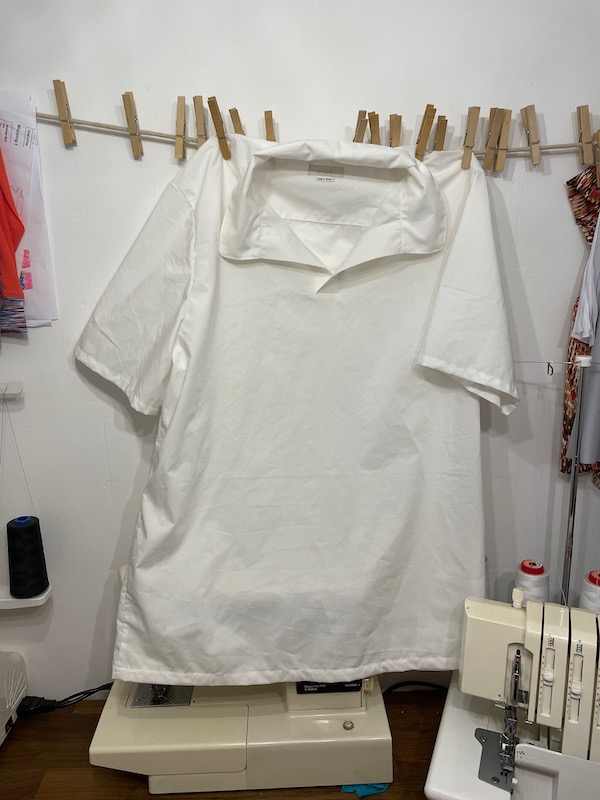
As I mentioned in my earlier post showing off this shirt as well as the women’s shirt, this post is to outline how to construct the Cos “Made By You” men’s shirt so that others in the future can construct it in spite of the very sparse video instructions provided with the pattern. A lot of this information may be a repeat of the women’s shirt post since the kits are very similar in structure, right down to the fabric and packaging provided.
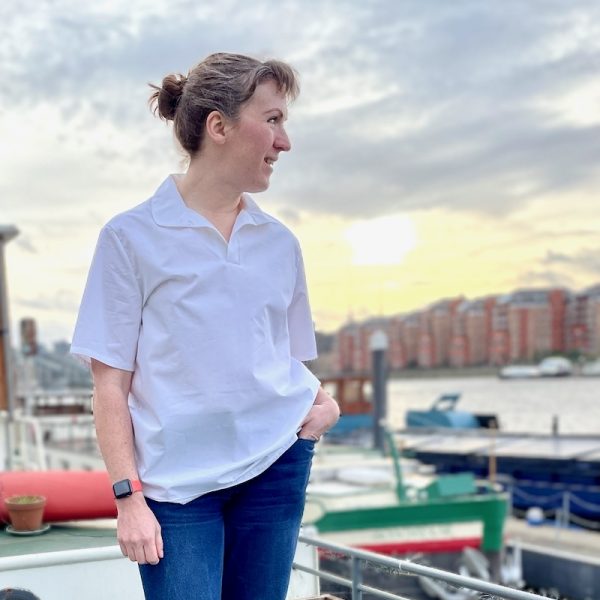
If you’d like to see more photos of me wearing the shirt as well as a fit assessment on a man vs woman’s body (plus what we’d change), head over here….
What’s in the kit?
The kit arrives in a nice cardboard box/envelope tied up with cotton tape (the only bit unused in the shirt itself). There’s one small sheet of card with a tech drawing, a few words, and a QR code to a web link. For size S/M, you also get 1.12m of 146cm wide 100% cotton lightweight shirting, which to my hand feels high quality, and something like a poplin, lawn, or batiste. It is somewhat sheer, so you can definitely see seam allowances and any dark underwear(!) through it. I would recommend using a Microtex/Sharp needle in size 60 or 70 (a universal needle was creating rather large holes, I found). You also small pieces of very lightweight fusible interfacing, sized exactly for fusing to both placket pieces and one collar piece, and not a centimeter more. The instructions completely omit the interfacing step, too! I would also highly recommend overlocking the cut edges of the yardage and pre-washing the fabric before cutting out your pattern pieces.
The finished chest measurement for size S/M is 118cm (46in), and due to the extremely straight cut, you can assume the waist and hip measurements are very similar.
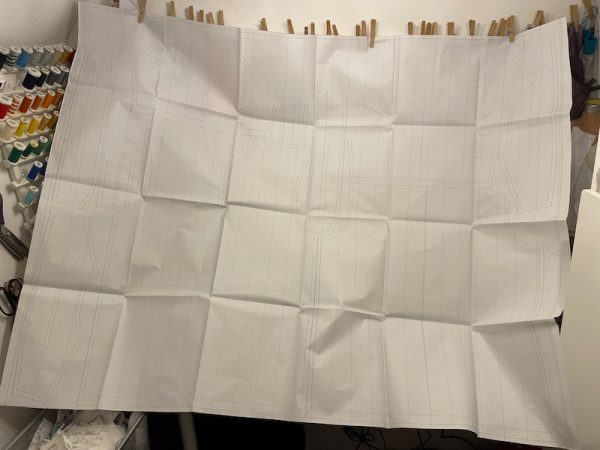
The pattern pieces are on one large piece of dot & cross paper, with the seam allowances, stitching lines, and grain lines plotted in biro (ballpoint pen), presumably from a plotting machine. Now, this is where things started to point to this being an industry pattern released by someone with zero knowledge of the home sewing market, because the pieces are all flat (ie: not a half pattern piece to be cut on the fold) and where two of a piece is needed, there are actually two on the pattern paper (like two identical back yoke pieces). Furthermore, all the grainlines are aligned (right down to the bias neck strip) without any regard for the amount of paper or cutting required. Oh, and did I mention that none of the pattern pieces have ANY labels on them?
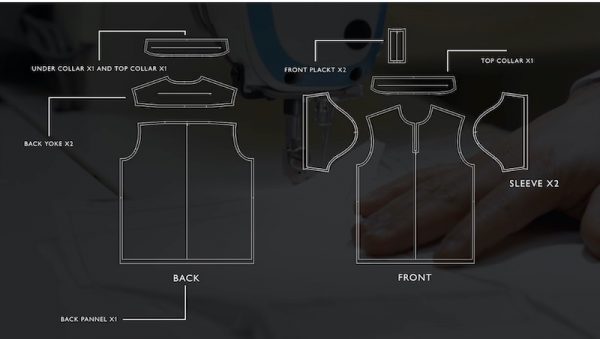
Furthermore, several pieces like the collars and yokes are rotated 90 degrees from the way they would normally be cut in home sewing patterns. This is clearly to save space in the paper and fabric, because, like the women’s shirt, there isn’t a single spare centimeter of fabric built into the layout, so if you need to lengthen or enlarge any pieces you’ll need to use different fabric entirely. If anything, the layout is even tighter on the men’s shirt than on the women’s one!
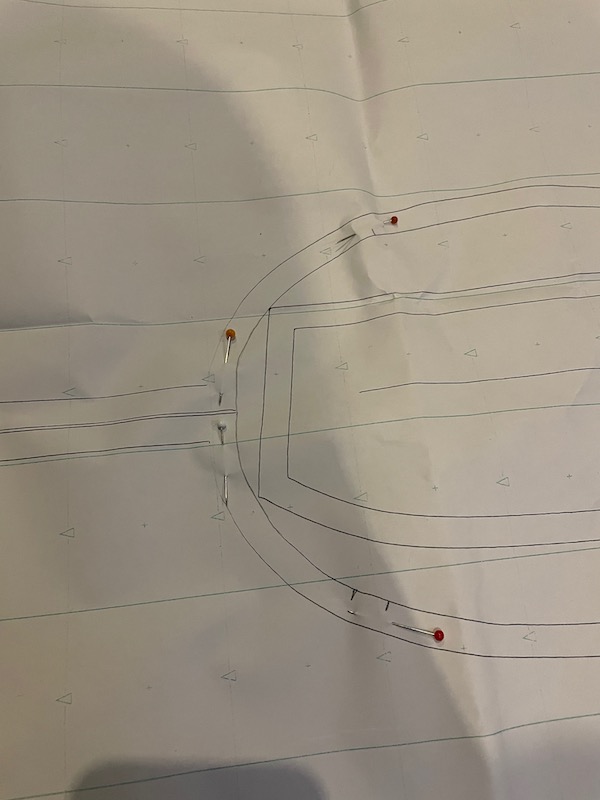
The included instructions
Which brings me to that QR code… which points to the Cos “Made By You” page, which hosts a video of a machinist constructing the shirt extremely quickly, and with one sentence (if you’re lucky) descriptions of the task printed on screen, like “Topstitch” or “Iron”. This is the entirety of the instructions! Oh, and at the very start the video shows the pattern pieces and says to label them. Hope you’re taking notes!
Seeing as how I’ve been burnt before by pattern companies removing support for old patterns, I immediately assumed that these videos will be taken offline the second Cos stop selling the kits. So if you’re reading this several months or years after buying yours, googling for how the F to put this together… read on! And you’re welcome.
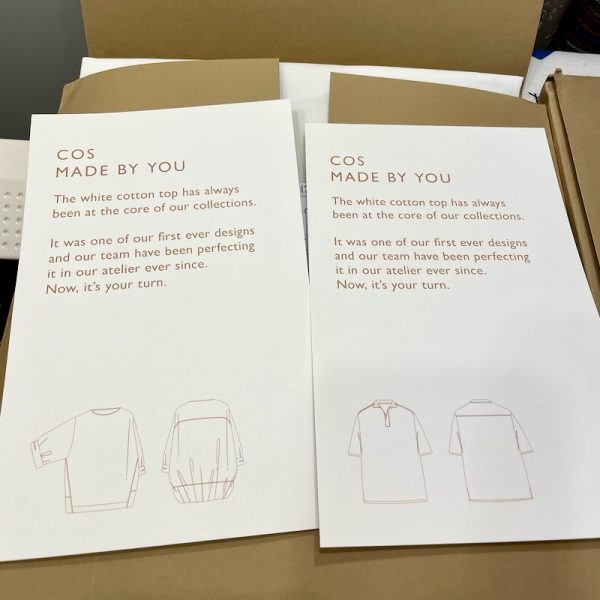
Cutting out
Once your fabric is pre-washed, you’ve got some choices. You could either cut out all the paper pattern pieces and try to pin them onto the fabric in the exact same arrangement as the paper (as I did with the women’s shirt), or you could try a different approach, like I did here, which was to not cut out the paper initially, but pin the entire sheet to the fabric within each pattern piece. I then used an old pair of pinking shears that I hate anyway to cut the fabric and paper as one (which will dull your fabric scissors!) or you could alternatively carefully cut the paper with it all pinned together, then cut the fabric.
Again, this incredibly tight, single-layer layout points to this being a straight-from-the-factory pattern, where the layout would be used to cut directly into the fabric (several layers at once), and arranged to minimise wastage over hundreds of garments – not to make it quicker for one person to cut out one garment with a tiny folding table in a corridor, like I’m doing.
While you’re cutting out, take note that there are 1cm (3/8in) seam allowances included, and actually really helpful notches. I really appreciated the quantity and placement of the notches, which all lined up perfectly and were not excessive (I’m looking at you, Vogue Patterns!). In fact, the entire pattern was perfectly drafted, from the minimal sleeve cap ease right down to the collar(s) being precisely the right length. So the drafting gets two thumbs up from me!
My instructions
As I mentioned, the only “instructions” provided are in the form of a very terse, very fast moving video without much details, so I took notes and what follows is a mixture of what Cos said in the video, and what I found helpful in sewing it for myself.
I apologise that the photos taken in my sewing room are not the best quality, and that white stitching on white fabric (where the right and wrong sides are identical) is not super clear. I don’t have a huge studio setup to take clear photos, which is why I choose to illustrate all of my own pattern instructions. But sorry, I’m not creating 20+ illustrations for someone else’s pattern for absolutely no financial benefit!
1. Fuse the provided interfacing onto both Front Placket pieces and one Collar piece. I’d also recommend fusing some of your own interfacing to the wrong side of the Front underneath the placket opening as you’ll be snipping into that later.
2. Staystitch the Front and Back Yoke necklines along the seamline (1cm or 3/8in), sewing from shoulder to CF/CB, then flipping over and sewing again from shoulder to CF/CB. Cos don’t mention this but it is crucial for not distorting the neckline and getting the collar to attach smoothly later on.
3. With right sides together, place one Back Yoke onto the Back along the shorter, slightly curved edge. Then, place the other Back Yoke underneath, with the right side facing the wrong side of the Back along the same curved edge. Pin and stitch all three layers together. Press flat, then press the Back Yokes away from the Back.
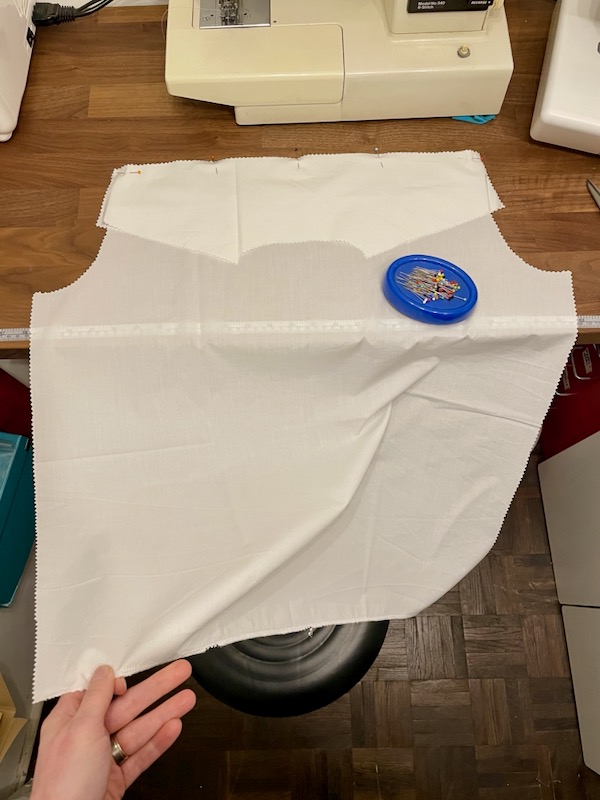
4. Topstitch close to the Back Yoke seam, through both Back Yokes and enclosed seam allowances. Press flat.
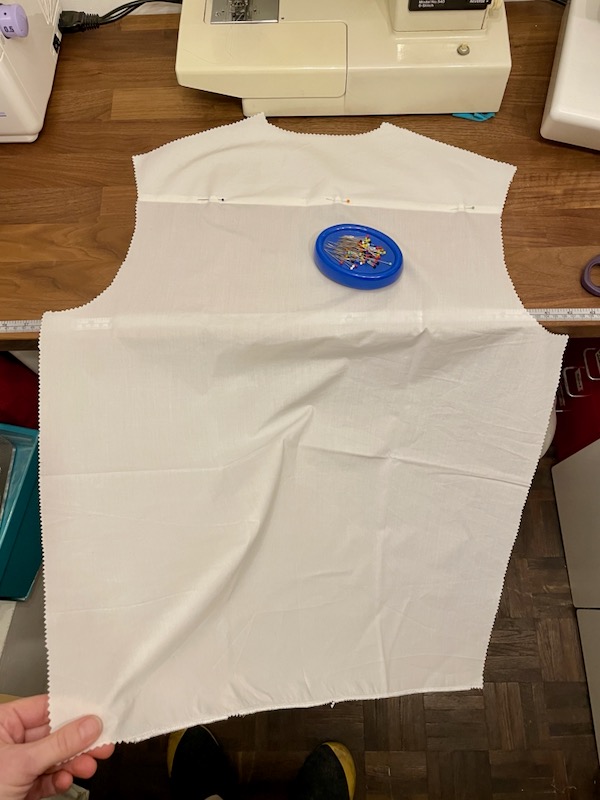
Now, this is where I had to get a little creative, because Cos’s video simply says “Attach plackets to Centre Front opening.” Err, cheers for that, guys! So what I’ll show you is how I did it, though it does result in some raw edges appearing at the neckline as it opens up (if you don’t add any buttons or snaps). So you may wish to do it differently, and please feel free to share your approach in the comments.
5. Press each Front Placket piece in half lengthwise, with right sides facing out. Align each along the Front’s opening edge, with seam allowances aligned. Stitch Front Plackets to Fronts, taking care to stop precisely 1cm past the bottom of the opening edge (you may wish to mark this stop line on your plackets)
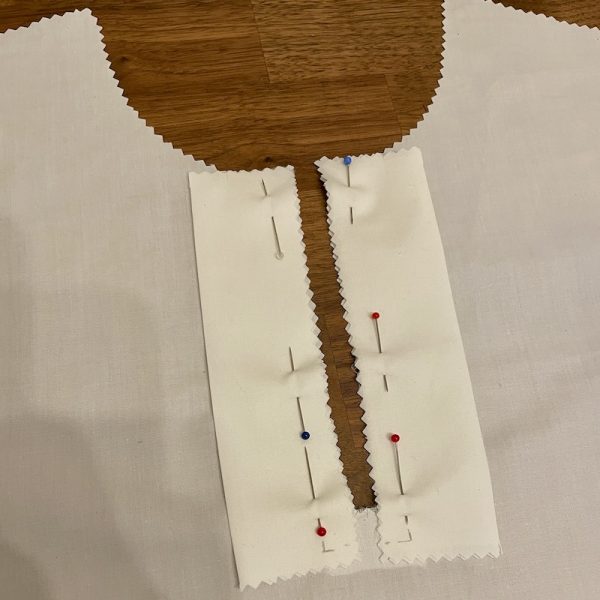
6. Cut diagonally through all layers from the corners of the opening to the end of the stitching.
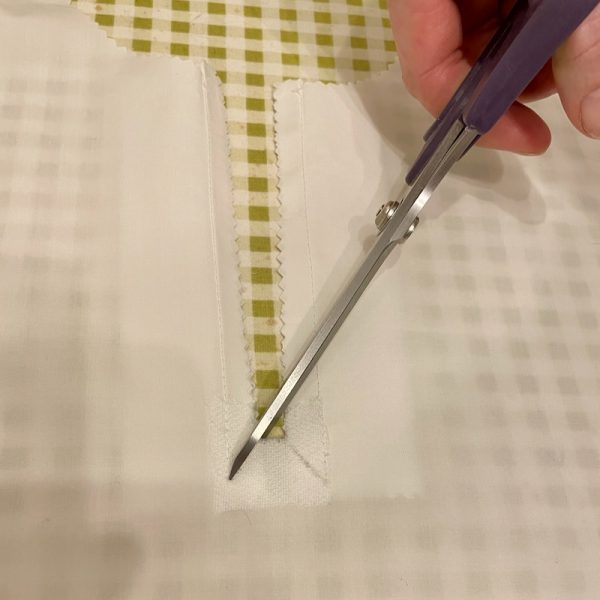
7. Press both Front Plackets towards the opening, with the seam allowances to the inside. Ensure that the short, bottom edge of the Front’s opening is also pressed to the inside.
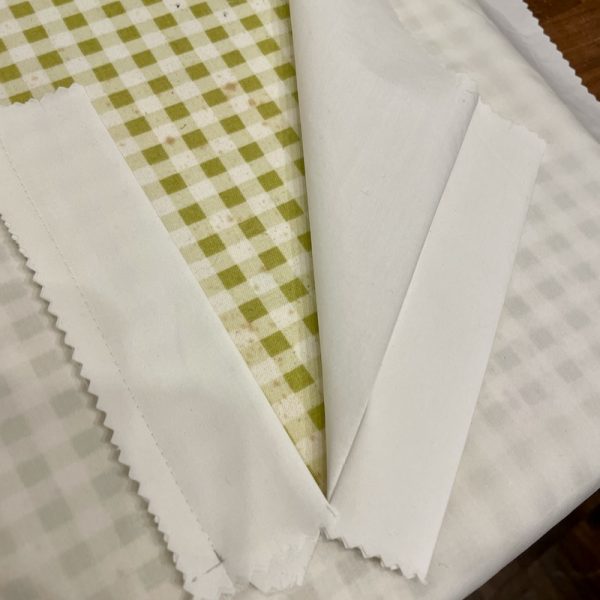
8. Sew the bottom of both Front Plackets to the short, bottom seam allowance of the Front opening, taking care to stop and start precisely at the previous stitching lines and NOT sewing through the main Front piece.
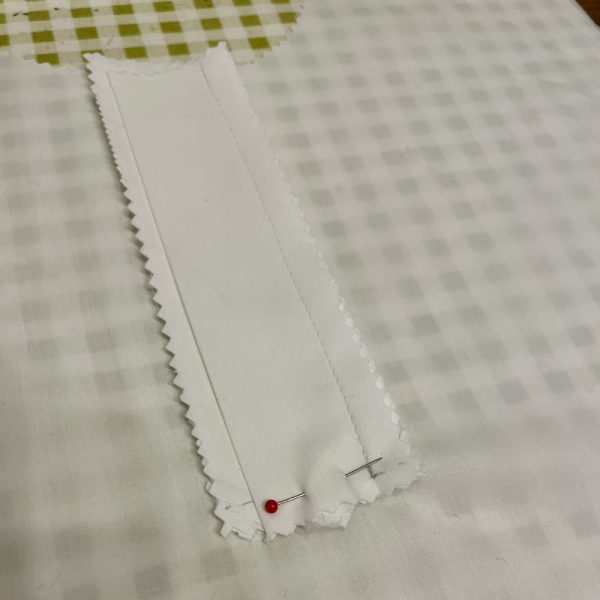
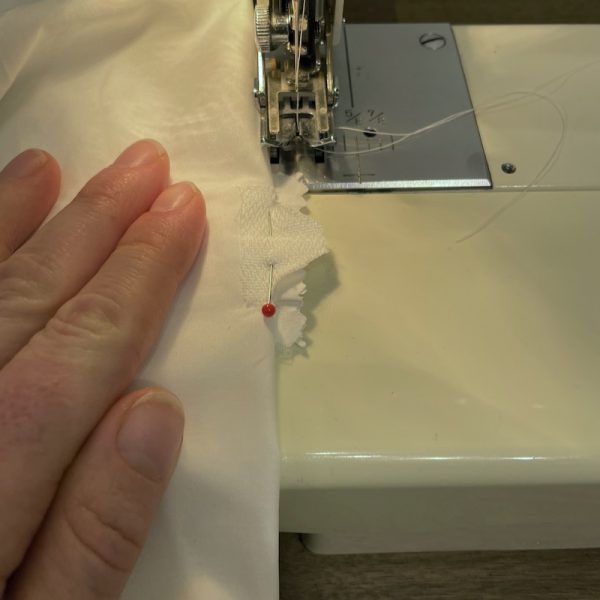
9. Press well. Your finished placket will look like this (though with the sheer nature of this fabric, you may wish to neaten up the bottom edge, either with overlocking, as Cos suggest, or just by trimming the layers to be even).
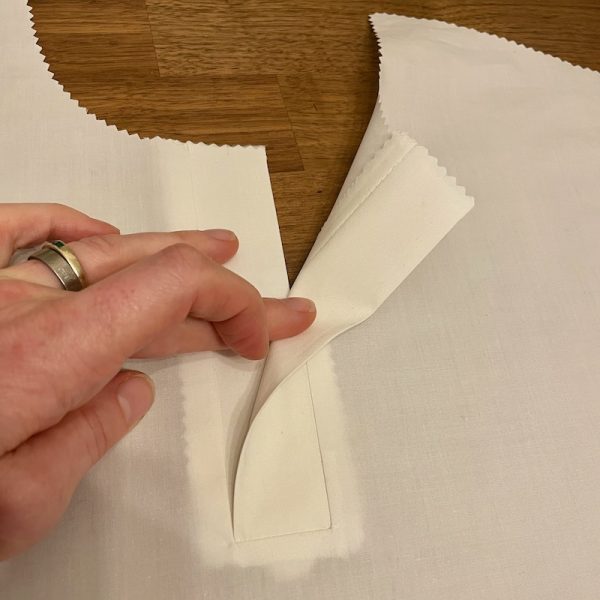
10. With right sides together, pin the Front to one Back Yoke along the shoulder seams. Starting at the hems, roll up the back and front pieces until you can wrap the other Back Yoke around the roll to reach the shoulder seams, with the right side of the Back Yoke against the wrong side of the Front (burrito method). Stitch the shoulder seams through all three layers, press flat, and turn the garment right-side out. Press the shoulder seams again.
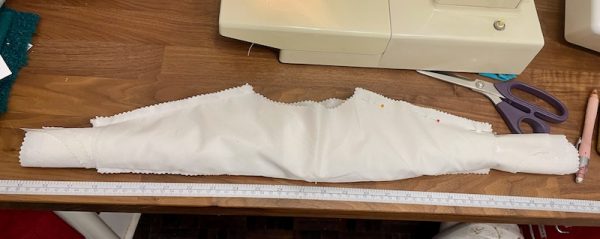
11. (Optional) You may wish to baste the two Back Yoke edges together along the back neckline and armhole edges. This will make it easier to attach the Sleeves and Collars.
12. Place the garment flat and right side up with the neckline as a circle in the middle. Place one Sleeve along the armscye, taking care to match notches (if they don’t match, either flip it over if your fabric is the same on both sides like the kit fabric, or grab the other sleeve). You may have to pin the sleeve cap area well to ease in the fabric, but you shouldn’t need easing stitches. Stitch the Sleeve to the Front, Back Yoke, and Back along the armscye. Repeat for the other Sleeve.
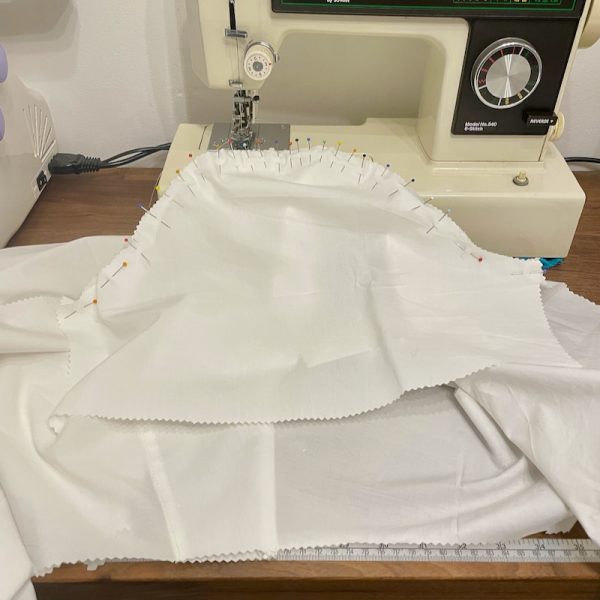
13. (Optional) Cos say to overlock the armhole seam allowance now, but I found this to be a bit silly since there are other seam allowances left raw inside, so if you didn’t cut your fabric with pinking shears like I did, you may as well overlock the other seams, too. If you don’t own an overlocker, just finish your seams however you choose for a fraying fabric.
14. Fold the garment in half at the shoulders with right sides together so that the Sleeve hems, underarm, and side seams meet, joining notches. Sew the arm and side seam in one go, through all layers. Press flat. Repeat for the other sleeve and side seam.
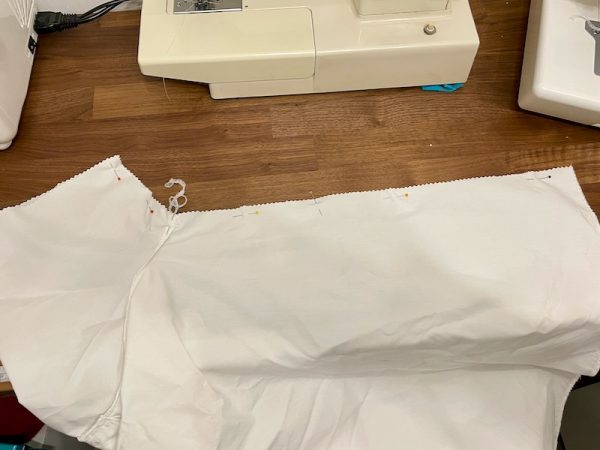
15. (Optional) Cos say to overlock the armhole seam allowance now, but be aware that this will make it a lot more difficult to adjust the fit at the side seams.
16. Double-turn and topstitch the bottom hem and sleeve hems. The pattern allows for 2cm (3/4in) hem allowances, so you can divide that up however you like. I did something like pressing 0.5cm under, then pressing 1.5cm under again and topstitching 1.4cm from the edge.
Again, this collar construction is where Cos’s instruction get really strange, and for the life of me I couldn’t figure out what they were trying to say (and the video was far too fast to show any important details!)
“Stitch the top and undercollar, inside out, press and turn. Bag out front neckline only with top and under collar necklines. Seam back neckline with upper collar only. Edgestitch the collar at the neckline, catch the inner collar at the back neckline with edgestitch to close.”
Yeah. So what follows is how I constructed it, which results in a clean finish as well, but feel free to do it however you like!
17. With right sides together, join both Collars along the short and long curved edges, starting and stopping 1cm from the bottom edges. Trim and clip the seam allowances at the curves. Protip: To avoid any chance of the collar flipping out on one side, employ Directional Sewing: stitch from one side to the centre, then flip the collars over and sew from the other side to the centre.
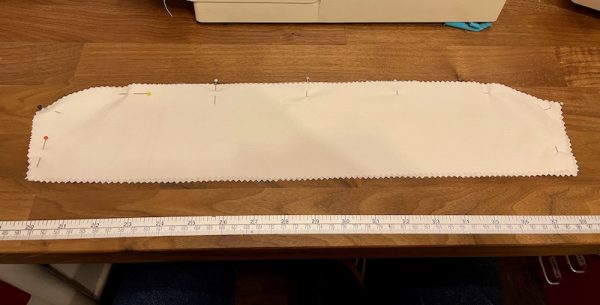
18. Press 1cm toward the wrong, interfaced, side of the outer Collar piece. Flip both collars right side out and press well.
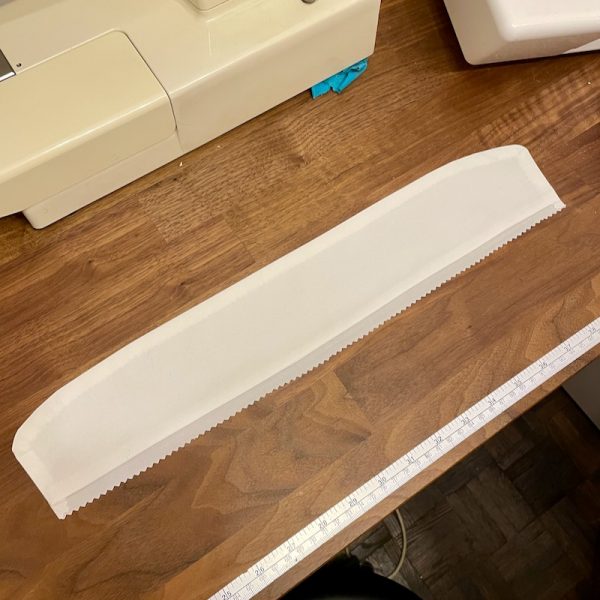
19. Pin the right side of the uninterfaced inner Collar to the wrong side of the neckline, taking care to match the short edges to the folded Front Placket edges. This is one place where notches for the CB and shoulder seams would’ve been useful on the Collar piece, so you may wish to measure and add these yourself (especially since the CB just involves folding the Collar in half!). Carefully sew, taking care not to catch any errant tucks in the body of the garment in the process. Press the seam allowances and inner Collar away from the body of the shirt.
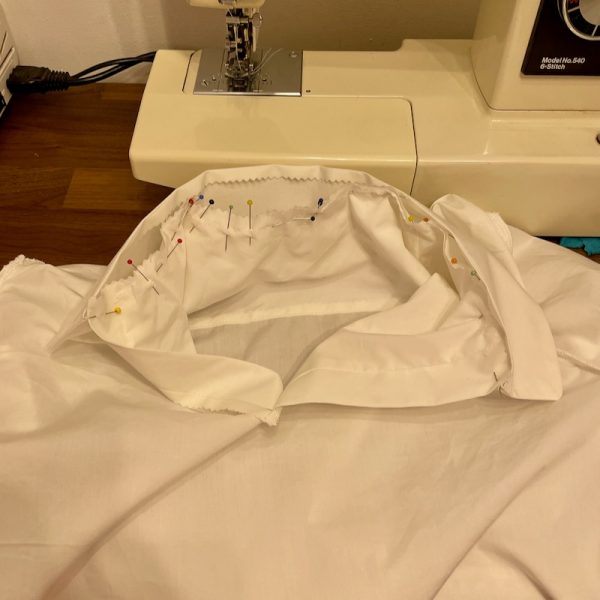
20. From the outside of the shirt, pin the outer Collar to the neckline with the seam allowances inside and ensuring the outer Collar covers the previous stitching. Sew close to the edge of the outer Collar. Press.
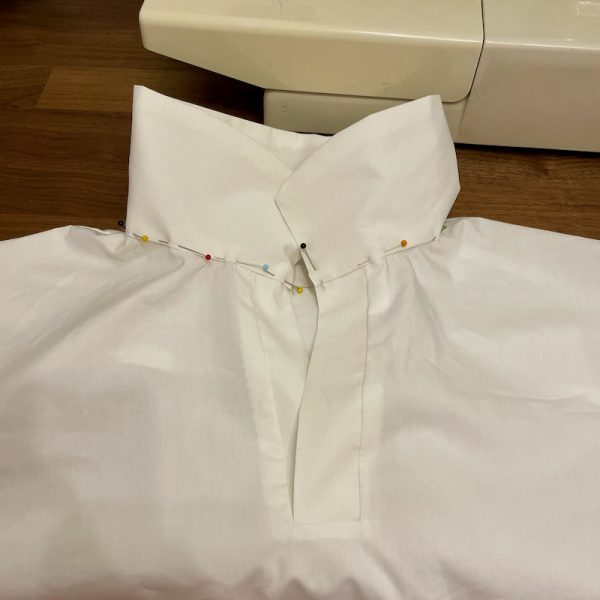
21. Top stitch the remaining Collar edges close to the edge. Press well.
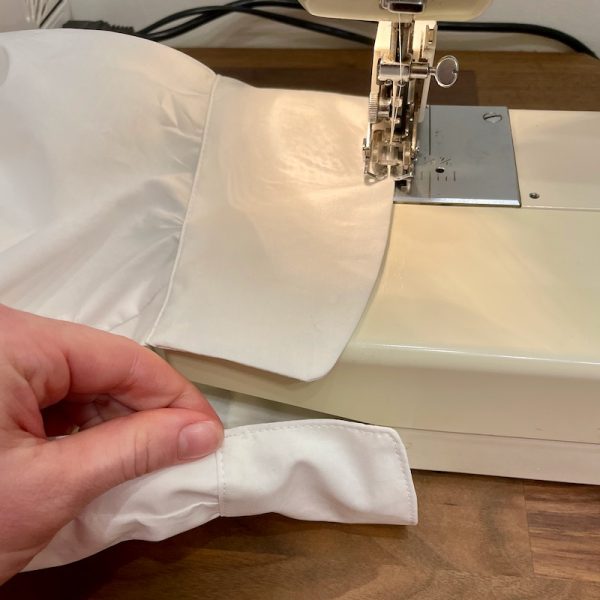
22. Press the entire garment well, because this fabric wrinkles if you even just look at it funny!

And you’re done! I hope this post proves to be useful for others with this kit, and do let me know in the comments if you know of any other fashion brands with similar DIY sewing kits.
